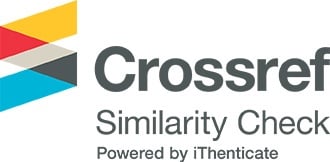Tác động kháng khuẩn của nước súc miệng thảo dược lên vi khuẩn nha chu
Các tác giả
DOI: https://doi.org/10.59294/HIUJS.30.2024.642Từ khóa:
Bệnh nha chu, nước súc miệng thảo dược, vi khuẩn nha chu, tác động kháng khuẩnTóm tắt
Đặt vấn đề: Nước súc miệng tự nhiên hiện nay đang là xu hướng kiểm soát mảng bám hỗ trợ cho các phương pháp vệ sinh cơ học với ít tác dụng phụ hơn các tác nhân hóa học khác. Tuy nhiên, hiệu quả của chiết xuất tự nhiên trong việc ức chế vi khuẩn bệnh nguyên nha chu vẫn chưa rõ ràng. Mục tiêu: Đánh giá khả năng kháng khuẩn chống vi khuẩn nha chu của nước súc miệng tự nhiên chứa chiết xuất thanh đại (Indigo naturalis), cau (Tannic), ngấy hương (Scrophularia kakudensis), cúc la mã (Matricaria recutita L) và lá xoài (Mangifera indica L). Phương pháp: Vi khuẩn được cấy trải trên thạch máu, đục các giếng đường kính 6mm chứa các loại nước súc miệng thử nghiệm và nhóm chứng trên đĩa thạch, ủ ở điều kiện thích hợp trong 3-5 ngày. Đo đường kính vùng ức chế trên đĩa thạch vi khuẩn. Kết quả: Nước súc miệng chứa chiết xuất cúc la mã có khả năng kháng được 5 loại vi khuẩn nha chu. Kết luận: Sử dụng nước súc miệng chứa chiết xuất cúc la mã có khả năng phòng ngừa và hỗ trợ điều trị bệnh lý nha chu.
Abstract
Background: Natural mouthwash is now a trend to control plaque, besides the mechanical approach, with fewer side effects than other chemical agents. However, the effectiveness of natural extract in inhibiting periodontal pathogens still needs to be clarified. Objective: To evaluate the antimicrobial against periodontal bacteria of natural mouthwash containing Indigo naturalis, Tannic, Scrophularia kakudensis, Matricaria recutita L, and Mangifera indica. L. Method: The agar plate surface is inoculated by spreading a volume of the microbial inoculum over the entire agar surface. A hole with a diameter of 6mm is punched aseptically, and a volume of the test mouthwash is introduced into the well. The agar plates are then incubated under suitable conditions. The bacterial inhibition capacity of the test solution is obtained by measuring the diameter of the zone of inhibition in bacteria agar plates. Result: Mouthwash included Matricaria recutita L, which has a larger zone of inhibition than others. Conclusion: Matricaria recutita L is effective in preventing and inhibiting periodontal pathogens.
Tài liệu tham khảo
[1] Brookes ZLS, Bescos R, Belfield LA, Ali K, Roberts A, “Current uses of chlorhexidine for management of oral disease: a narrative review,” J Dent, 103, 103497, 2020.
DOI: https://doi.org/10.1016/j.jdent.2020.103497[2] Sharma A, Sabharwal P, and Dada R, “Chapter 1 - Herbal medicine - An introduction to its history”, In Herbal Medicine in Andrology, Editor(s): Ralf Henkel, Ashok Agarwal, Academic Press, 1-8, 2021.
DOI: https://doi.org/10.1016/B978-0-12-815565-3.00001-1[3] Trần Thị Phương Thảo, Lương Thị Mỹ Ngân, Phạm Anh Vũ Thụy, “Nuôi cấy và định danh vi khuẩn Porphyromonas gingivalis từ mảng bám dưới nướu của bệnh nhân viêm nha chu”, Tạp chí Y học TPHCM, 22, 5, 178, 2018.
[4] Trần Thị Phương Thảo, Đặng Thị Thắm, Trương Thành Hưng, “Phân lập và lưu trữ vi khuẩn Fusobascterium nucleatum từ mảng bám dưới nướu của bệnh nhân viêm nha chu”, Tạp chí khoa học Trường Đại học Quốc tế Hồng Bàng (HIU), số 19, 2022.
[5] Thao T, Ngan L, Van N, & Thuy P, "Isolation and storage of Aggregatibacter actinomicetemcomitans from the subgingival plaque of patients with periodontitis," Sci-Tech Dev J - Health Sci, 2(2), 185-19, 2021.
[6] Dabbaghi A, Kabiri K, Ramazani A, Jahandideh A (2009), "Synthesis of bio-based internal and external cross-linkers based on tannic acid for the preparation of antibacterial superabsorbents," Polym Adv Technol, 30, 2894-2905, 2009.
DOI: https://doi.org/10.1002/pat.4722[7] Chiang YR, Li A, Leu YL, "An in vitro study of the antimicrobial effects of indigo naturalis prepared from Strobilanthes formosanus moore," Molecules, 18, 14381-14396, 2013
DOI: https://doi.org/10.3390/molecules181114381[8] Singh O, Khanam Z, Misra N, Srivastava MK, “Chamomile (Matricaria chamomilla L.): An overview,” Pharmacogn Rev, 5(9), 82-95, 2021.
DOI: https://doi.org/10.4103/0973-7847.79103[9] Masłowski M, Aleksieiev A, Miedzianowska J, Strzelec K, "Potential application of peppermint (Mentha piperita L.), german chamomile (Matricaria chamomilla L.) and yarrow (Achillea millefolium L..) as active fillers in natural rubber biocomposites," Int J. Mol Sci, 22, 7530, 2021.
DOI: https://doi.org/10.3390/ijms22147530[10] Móricz AM, Ott PG, Alberti A, Böszörményi A, “Applicability of preparative overpressured layer chromatography and direct bioautography in search of antibacterial chamomile compounds,” Journal of AOAC International, 96(6), 1214-1221, 2013.
DOI: https://doi.org/10.5740/jaoacint.SGEMoricz[11] Nguyễn Quang Huy, Nguyễn Thị Mai Duyên, “Nghiên cứu hoạt tính kháng khuẩn sâu răng từ dịch chiết cây xoài (Mangifera Indica L.),” Tạp Chí Dược học, 51, 4, 37–42, 2014.
[12] Anand G, Ravinanthan M, Basaviah R, Shetty AV (2015), “In vitro antimicrobial and cytotoxic effects of Anacardium occidentale and Mangifera indica in oral care,” J Pharm Bioallied Sci., 7 (1), 69-74, 2015.
DOI: https://doi.org/10.4103/0975-7406.148780[13] Bbosa GS, Kyegombe DB, Ogwal‐Okeng J, et al., “Antibacterial activity of mangifera indica (L.),” African Journal of Ecology, 45, 13–16, 2007.
DOI: https://doi.org/10.1111/j.1365-2028.2007.00731.xTải xuống
Tải xuống: 342











